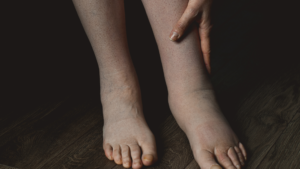Fibrosis is a challenging aspect of lymphedema, can significantly impact an individual’s quality of life. Understanding the causes, symptoms, and effective management of fibrosis is crucial for those living with lymphedema.
What causes fibrosis in lymphedema?
Fibrosis in lymphedema is primarily driven by impaired lymphatic flow. When the lymphatic system is compromised due to surgery, radiation therapy, or other factors, the normal circulation of lymphatic fluid is disrupted. This disruption can trigger a cascade of events, including chronic inflammation and the buildup of fibrous tissue. Over time, fibrosis can lead to the hardening and thickening of the affected area.

How do you break up fibrosis in lymphedema?
Managing fibrosis in lymphedema is essential to prevent further complications. Several strategies can help break up fibrosis and improve lymphatic circulation. Manual Lymphatic Drainage (MLD), a specialized massage technique, can encourage the movement of lymphatic fluid and soften fibrous tissue. Compression therapy, involving the use of daytime and nighttime compression garments, can also help reduce fibrosis by promoting fluid drainage and minimizing swelling. Additionally, personalized exercise programs designed to enhance lymphatic flow can be highly effective.

It’s important to note that these interventions should be carried out by professionals experienced in lymphedema management. They can tailor treatment plans to the individual’s specific needs and ensure that the therapies are safe and effective.
What is the main cause of lymphedema?
Lymphedema is primarily caused by disruptions in the lymphatic system which can either be primary or secondary. Surgical procedures, such as lymph node removal during cancer treatment, can disrupt lymphatic flow. Radiation therapy can also damage lymphatic vessels and nodes. Additionally, congenital conditions affecting the lymphatic system can lead to primary lymphedema. Regardless of the cause, lymphedema often involves fibrosis as one of its complicating factors.
Conclusion
Fibrosis in lymphedema is a complex challenge, but understanding its causes, symptoms, and management strategies is essential for individuals living with this condition. Seeking professional guidance and following a personalized treatment plan can significantly improve lymphatic circulation, reduce fibrosis, and enhance overall well-being. For more information on lymphedema management, you can also refer to Amanda Sobey’s article on Understanding Lymphedema: Causes, Symptoms, and Diagnosis.
Remember that effective management is a collaborative effort between individuals with lymphedema and their healthcare team, and it can lead to a better quality of life and improved mobility.


